Since I got it, I have been using it intensely: the Grayl Ultralight Compact Purifier. How good is it after two years in use? Watch the video!
- Size: 473 ml/12 oz (6.8 cm x 24.5cm)
- Weight: 309 gr
- Price: € 75,00/ $70,00
The Grayl Ultralight Compact Purifier is a very portable, simple and clever purifier that I have been using since I got it on a tradeshow two years ago and I have become very fond of it. And not only me: my family too. And what comes in handy: my dearest is a Civil Engineer with the specialization in water purification so she was curious about this purifier too. Now, what is the big deal about this purifier? Let’s start with some numbers.
Size, weight and content
One of the most important things for me is always the weight and the size of the gear that I need to carry in my backpack. In this case in the side pocket. The Grayl Ultralight Compact Purifier has a diameter 6.8 cm and a length (or height) of 24.5 cm. In that respect it is not bigger or smaller than the bottles that I usually bring on my trips. The weight of 309 grams is not lightweight but still very decent. The bottle slash purifier has a content of 16 oz – yes, it’s an American bottle – or 473 ml.
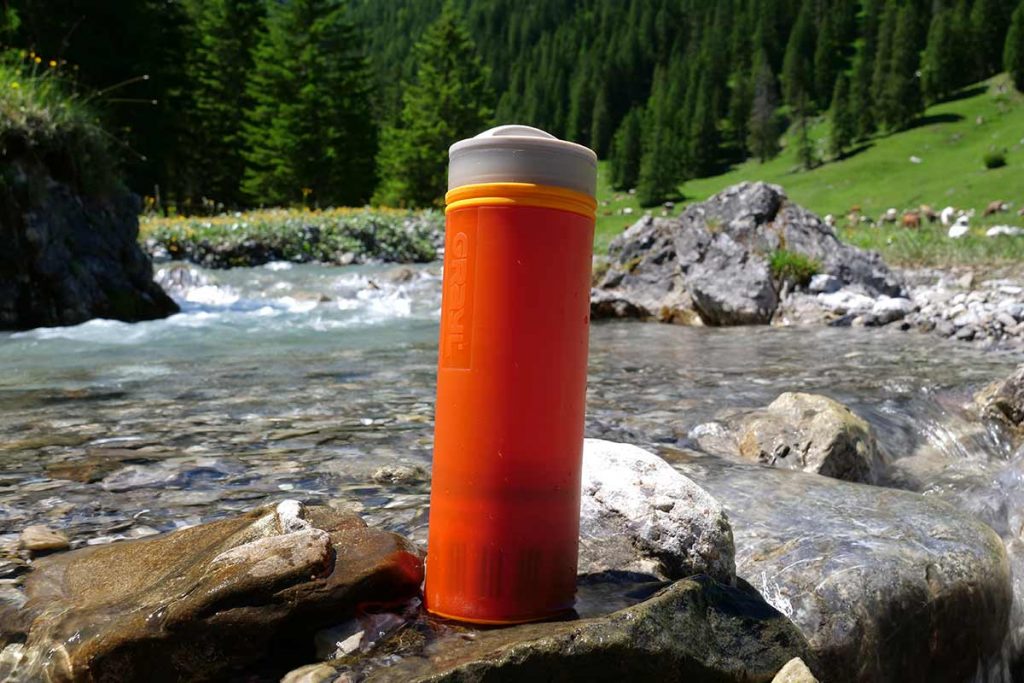
What does it do?
Well, quite simple: a purifier purifies water and the data that producer Grayl provides are impressive. Grayl claims that the Utralight removes 99.9999% of viruses like Hepatitis A, SARS and the Rotavirus, a 99.9999% removal of bacteria like E. coli, Salmonella and Cholera and a 99.999% (don’t ask me where the 0.0009 difference comes from) removal of protozoan cysts like Giardia and Cryptosporidium. Next to that it filters sediment, chemicals, microplastics and heavy metals out of the water. And it makes water simply taste better. For so far what it does, but how do they do it?
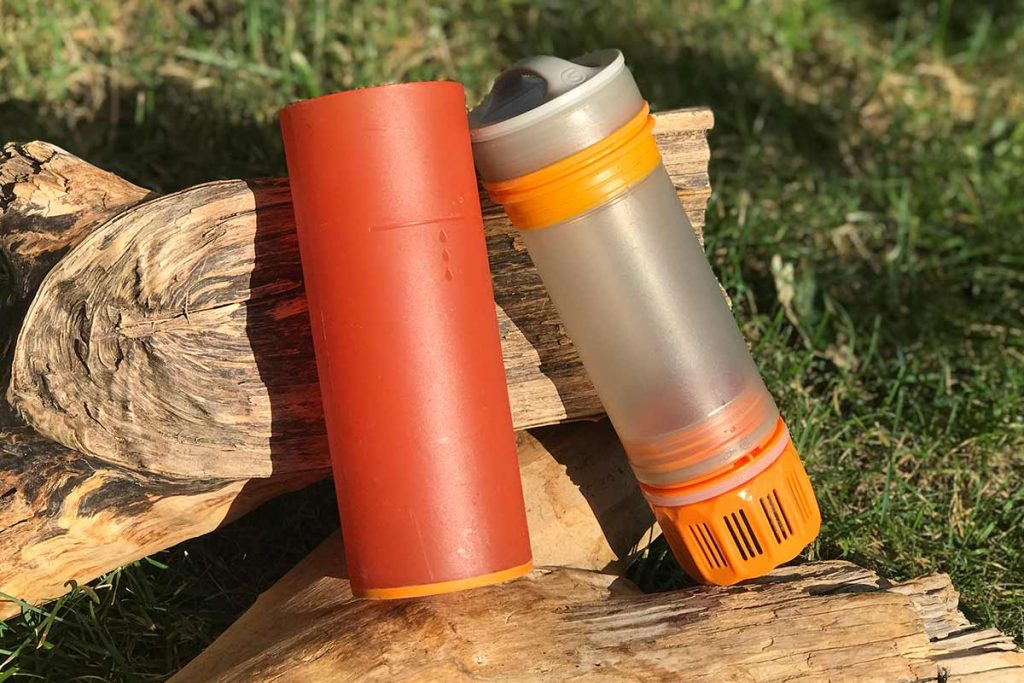
How it works
The Grayl Ultralight Compact Purifier is made out of BPA free materials; polypropylene, TPE and foodgrade silicone and ABS. It consists of an outer bottle and an inner bottle. The inner bottle has a filter at the bottom and a screw on/off lid on the top. By filling the outer bottle with water from a stream, river or lake – or the tab – and pressing the inner bottle in the outer bottle, I press the water through the filter into the inner bottle. And so, the inner bottle is the clean water container. The filter is equipped with two food grade silicone seals that prevent dirty water slipping past the filter. On the top the inner bottle is also equipped with a seal that prevents the inner bottle sliding out of the outer bottle when carrying it on the loop on the cap.
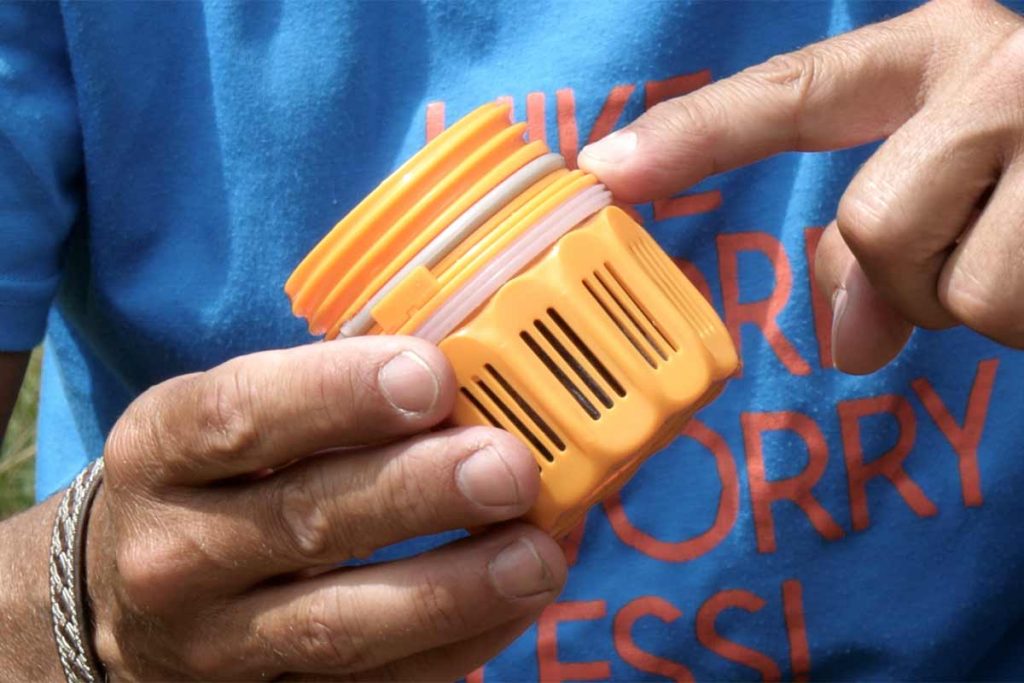
Filter in depth
The filter itself is connected to the inner bottle with a thread. This is clever because when the filter is at the end of its life – more on this later – I can replace it. The filter is made of a combination of a microfilter and activated carbon. And my wife steps in and wrote the next chapters.
The biggest particles cannot pass the entrance to the filter because of the slits on the outside of the filter. The microfilter makes sure that even smaller particles cannot enter the filter itself. And the filter itself consists of three different materials: some electro adsorptive media, media for ion exchange and activated carbon. They all have a different function and together they purify the water.
The electro adsorptive media captures pathogens (germs that make you ill and have a biological origin) like viruses, protozoa and bacteria and also the inorganic components in the water. Inorganic components are the substances that do not contain carbons, like minerals, salts and metals. The electro adsorptive media captures these pollutions like a magnet.
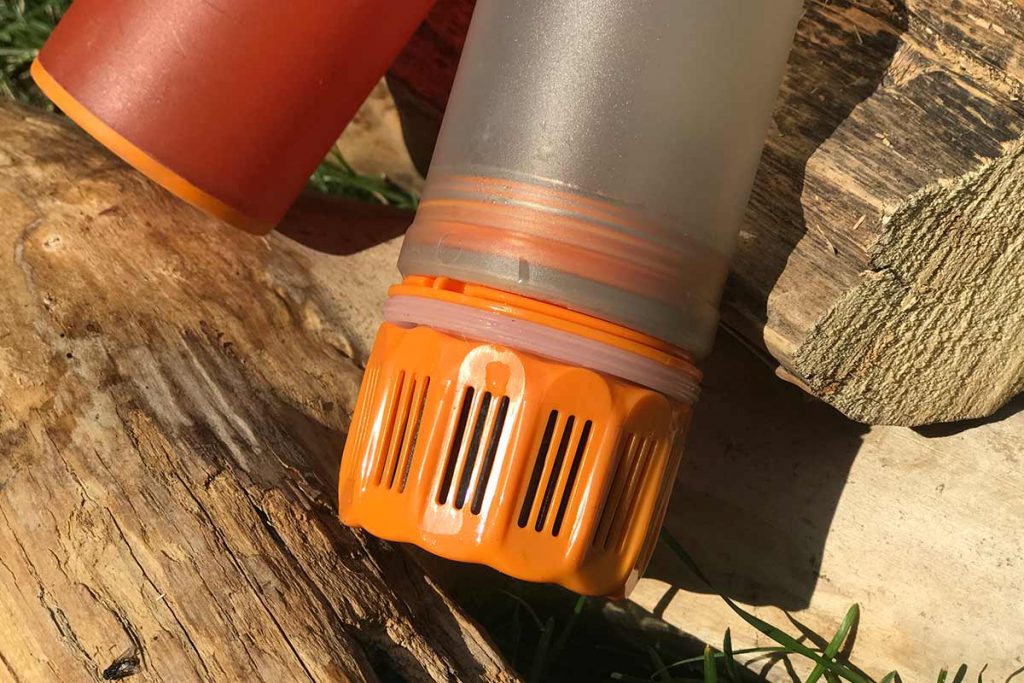
When the electro adsorptive media has attracted the pollution towards the filter, the media for ion exchange makes sure the pollution stays into the filter by exchanging a harmless component with the pollution. So, it permanently binds the pathogens and inorganic components.
Activated carbon is a specially treated carbon (with heat) that can bind all kinds of substances through adsorption. You can compare adsorption with sticking or gluing. In the drinking water purification, it is mostly used to adsorb pollutants such as pesticides, heavy metals and other organic substances. The activated carbon helps also to remove odors and improve the flavor of the water.
The activated carbon does something extra. There are quite some countries on this globe that provide safe water from the tab but sometimes it just doesn’t taste that good. By running this not so tasty tab water through the Grayl, the activated carbon neutralizes the bad smells and taste resulting in a fresh mountain stream drinking experience. So, it doesn’t need to be an ultimate outdoor experience where the Grayl Ultralight Compact Purifier proves handy.
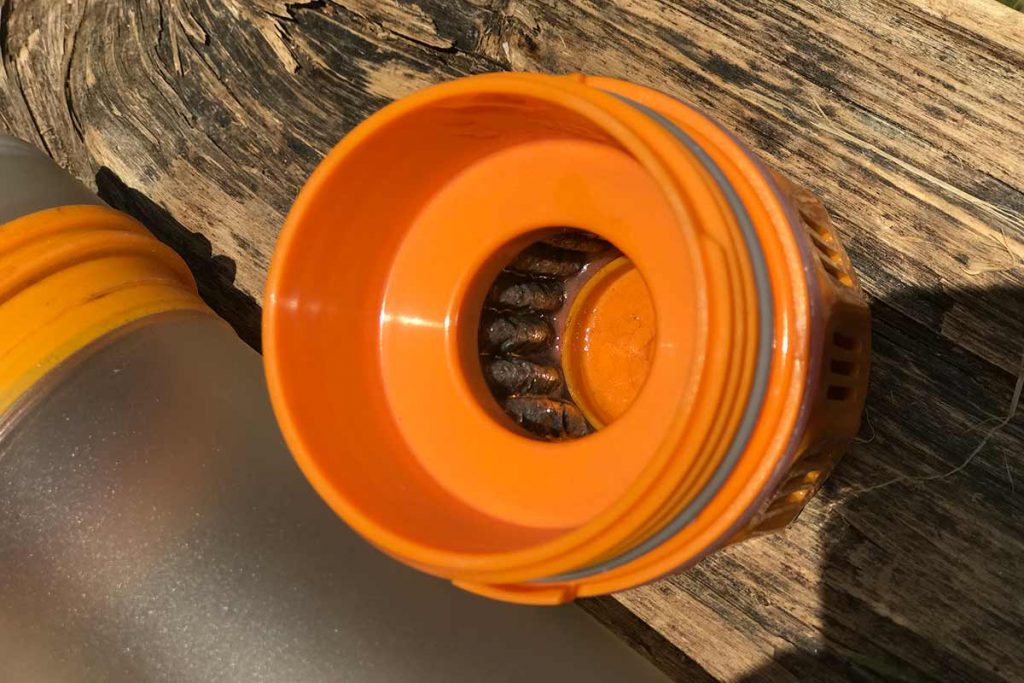
Filters end of life
According to Grayl the filter has a lifespan of about 300 filter cycles and that is around 150 liters of water. But this is only a benchmark since the filter life is very much depending on the water that you are purifying. With very dirty water with a lot of sediment for example the filter will have a shorter life and if you are cleaning very crisp water from a mountain stream it will have a prolonged life.
With a fresh new filter, the Grayl takes about 15 seconds to press the water through the filter. When the filter is used more frequent and gets dirty the filtration time will be longer. As soon as I hit the 25 second barrier Grayl advices to replace the filter. I should also change the filter if I have used it for three years but not hit the 150 liter or 25 seconds mark yet.
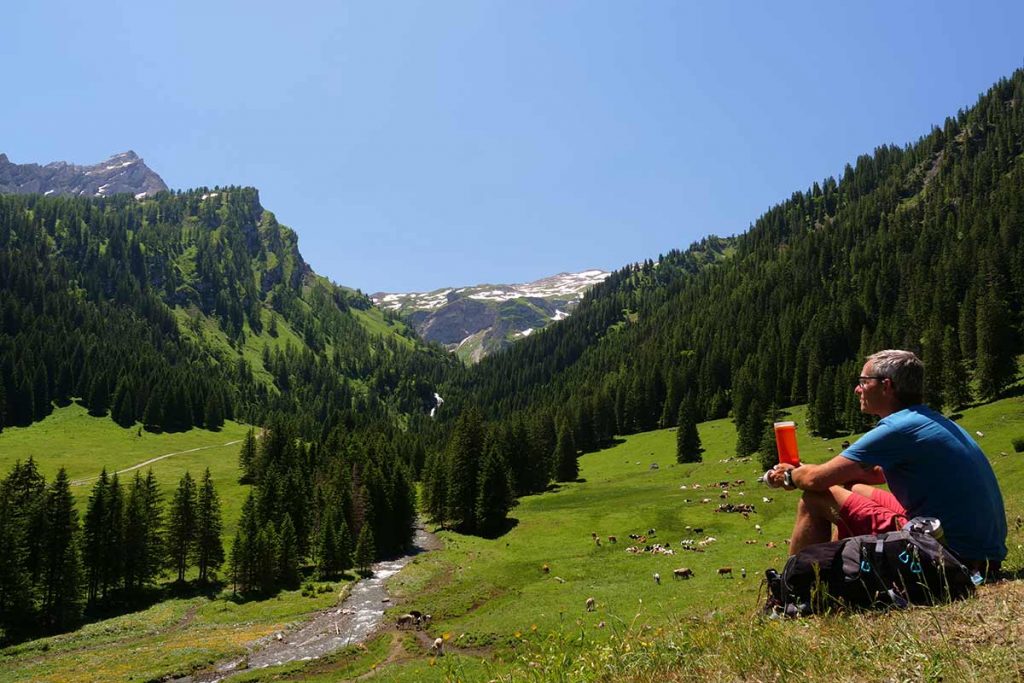
Little catch
One thing that you should be aware of when using the Grayl is cross contamination. This can happen when I take water from a stream for example. I take the outer bottle to scoop water and I need the other hand to press the inner bottle in. With this hand I touch the part that I put my mouth on to too drink the water. This hand might be dirty – hé, it’s an outdoor life – and this dirt gets onto the drinking part and so into my mouth. So, take care when doing this.
Another thing that happens quite easily is that little drops of ‘dirty’ water on the outer bottle get onto the drinking part of the inner bottle. Just because we are doing this on the go and not in a laboratory. One thing that you should not do is lay the inner bottle on the ground/grass/soil when you are collecting water. This is a very easy way of getting dirt on the drinking part.
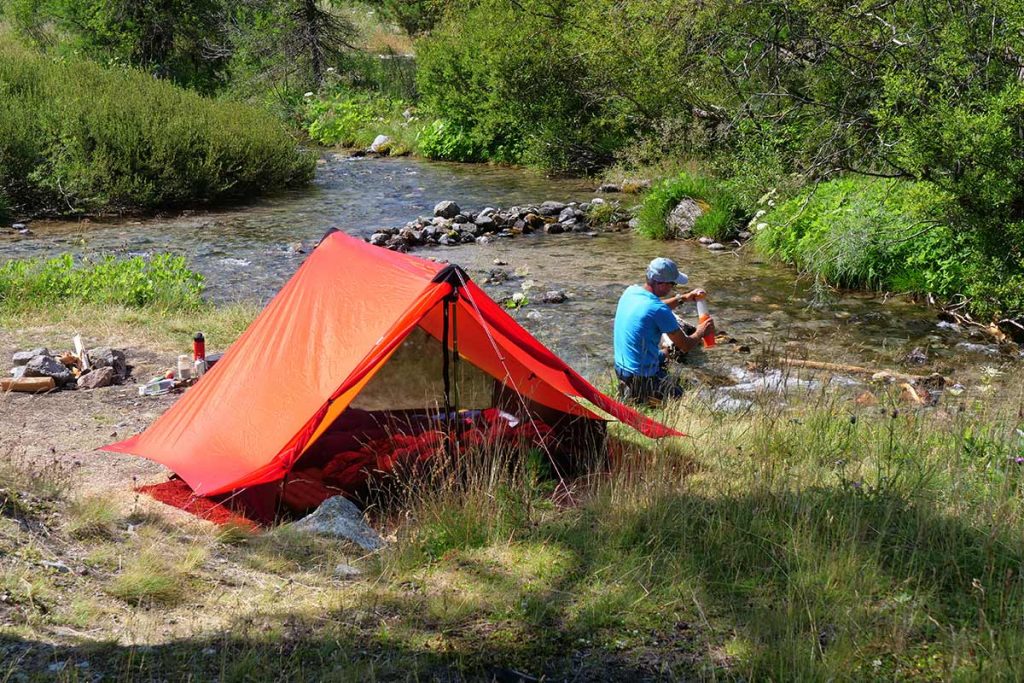
Cross contamination Solution?
Next to making a habit of being careful when using the Grayl, I found a way to clean the drinking part at least a bit. Grayl advices to fill the outer bottle to the filling line. When I do this no water will poor over the edge when pressing the filter downwards. I deliberately overfill the bottle. When I press the filter in the outer bottle there is too much water and the excess will poor over the edge washing away any dirt on the drinking part. No, Grayl is not advising this and it is not fool proof but listening to my dearest it can help a bit to prevent getting sick from dirt on the drinking part.
The Ultralight Compact Purifier was the first purifier from Grayl but by now they also have the Grayl Geopress Purifier. This bottle is a bit bigger, but the real gain is that this one has a drinking nozzle and the risk of cross contamination is reduced a lot.
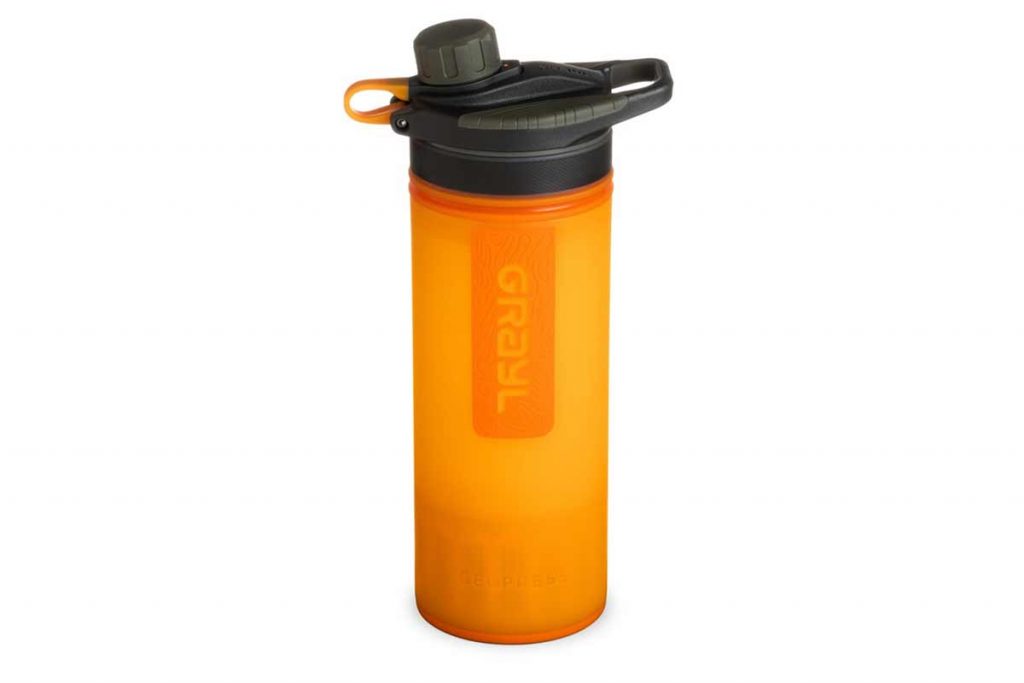
Warnings
Like most manufacturers that produce health related gear, also Grayl has a quite substantial list on what not to do with the filter. And I do totally understand this. I will just name a few of them and if you want to know them all: visit the Grayl website.
- Only purify fresh water
- Don’t use salt or brackish water
- Don’t use water with tannins (tea colored water)
- Prevent freezing conditions
- Don’t expose it to temperatures exceeding 50 degrees Celsius (120 F)
- Don’t put it in the microwave
- It’s not designed to filter high levels of chemicals and heavy metals
- It’s not designed to protect against industrial disasters
- It’s not designed to protect against coal ash
- It’s not designed to protect against very high lead levels
- It’s not designed to protect against mercury
- It’s not designed to protect against nuclear disasters
Well, you get the idea: just use it in a sensible and logical way in the outdoors.
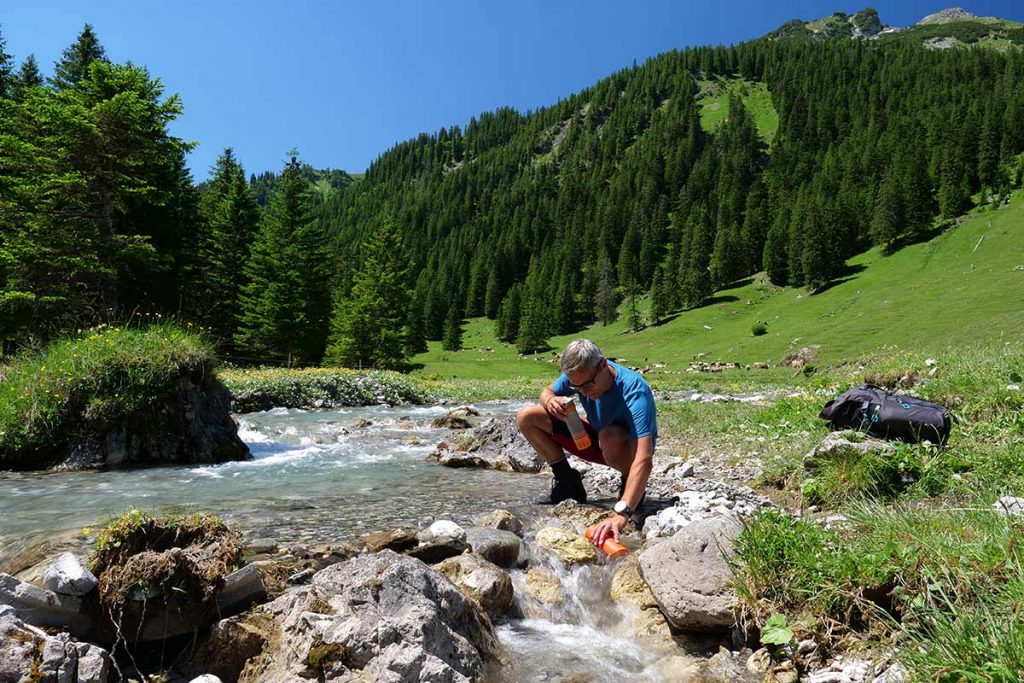
Verdict
Since I got the first Grayl Ultralight Compact Purifier we as a family of four have been using it with great satisfaction. It has proven to be a good solution to be guaranteed with getting fresh safe water during our hikes. And because of this we didn’t need to bring a lot of fresh water with us in our backpacks. But where we travel in Scandinavia and the Alpes, nice fresh crisp water for purification is always available. In the years we have been using the Grayls – we have two now – we never got sick, but we take great care in preventing the drinking part from getting dirty and so we minimize the risk of cross contamination.
The Grayl has proven to be rugged and very easy in use. Pressing the inner bottle in the outer bottle and squeezing the water through the filter takes some force but everybody can do this. I like the fact that it is made in an environmentally sustainable way: BPA free and with a filter that can be exchanged when it is end of life. And I didn’t mention it above, but Grayl is member of the 1% For The Planet organization. The price for the replacement filter is about € 35,00 ($30) and the Grayl Ultralight Compact Purifier retails for € 75,00 ($ 70). I think that is real value for my money and therefor I rate the Grayl Ultralight Compact Purifier at 9.0 out of 10 total.
Information: www.grayl.comhttp://www.grayl.com
